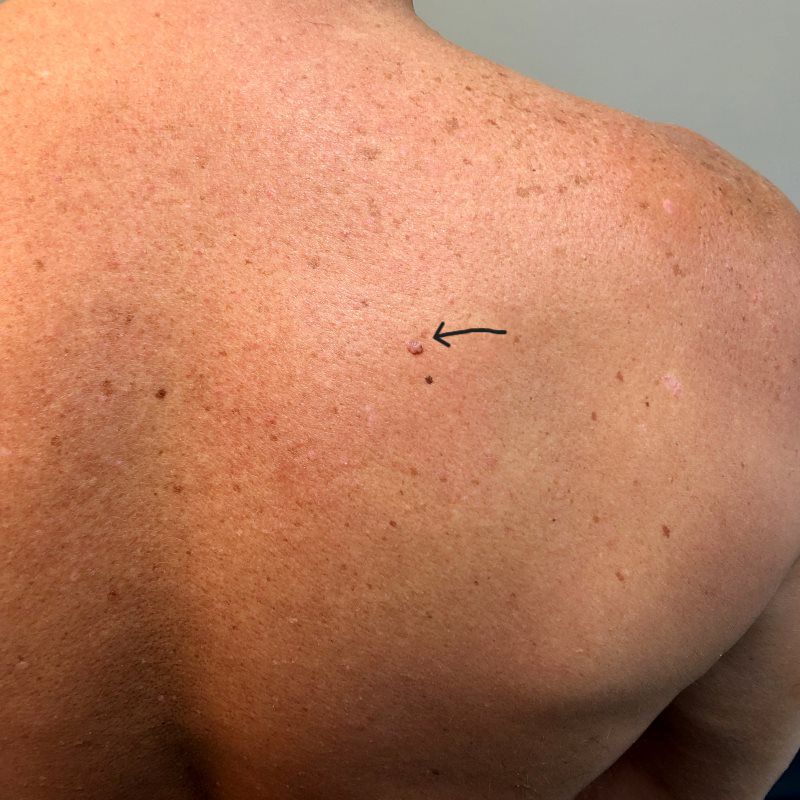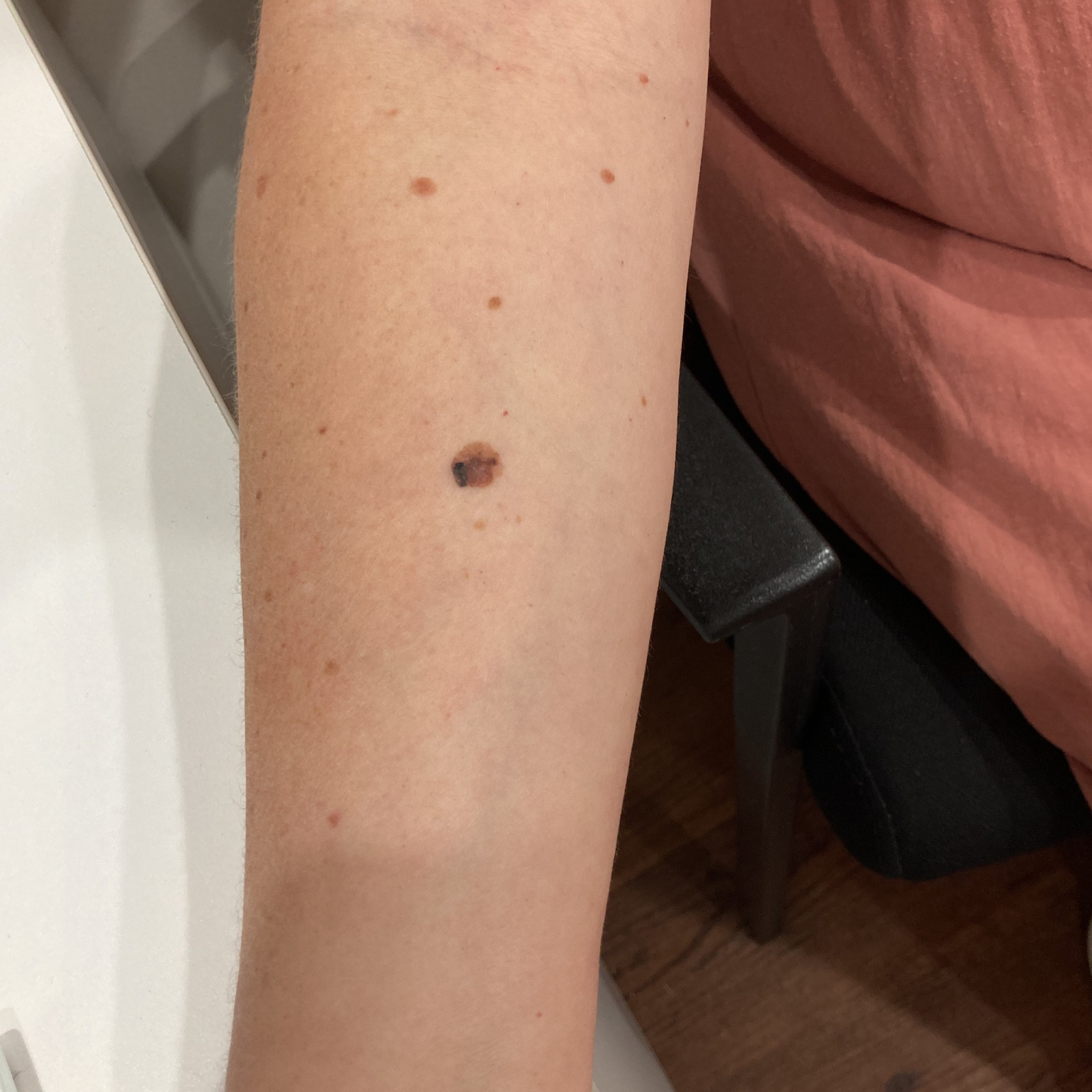Melanoma is a type of skin cancer that originates in the cells that produce melanin, the pigment responsible for the color of your skin, hair, and eyes. While it accounts for only a small percentage of all skin cancers, it is responsible for the majority of skin cancer-related deaths. The good news is that when detected early, melanoma is highly treatable, making awareness and early detection vital.
Melanoma
How to Spot a Melanoma ?
Identifying melanoma can be challenging. The ABCDE method is a useful tool for recognizing potential warning signs:
Asymmetry: If one half of a mole or spot does not match the other half in shape or size, it may be a cause for concern.
Border: Melanomas often have irregular, poorly defined, or jagged borders. A smooth and even border is a positive sign.
Color: Pay attention to the color of the mole or spot. Multiple colors, especially shades of brown, black, red, white, or blue, within the same spot can indicate melanoma.
Diameter: A mole or spot larger than 6 millimeters (about the size of a pencil eraser) is considered a potential warning sign. However, some melanomas can be smaller, so don’t rely solely on this criterion.
Evolution: Monitor any changes in size, shape, color, or symptoms over time. Melanomas often evolve, while normal moles tend to remain stable.
A more simple triad to remember is NEW + FLAT + BLACK and would account for >70% of melanomas.
And always remember any Elevated Firm Growing (EFG) pink lesion in people over 40 years old is highly suspicious for melanoma.


Subtypes of Melanoma
Melanoma can manifest in various forms, and understanding these subtypes is essential for accurate diagnosis and treatment. The primary subtypes include:
Superficial Spreading Melanoma: This is the most common subtype and usually appears as a new, flat, irregularly shaped mole with various colors.
Nodular Melanoma: Nodular melanoma typically grows rapidly and presents as a raised lump that is often black. It may not exhibit the ABCDE characteristics.
Lentigo Maligna Melanoma: Most commonly found in older adults, this subtype often develops in areas with significant sun exposure, such as the face and neck and are usually much slower growing.
Acral Melanoma: Occurring on the palms, soles, or beneath the nails, acral lentiginous melanoma is more common in people with darker skin tones.
Amelanotic Melanoma: These melanomas lack pigment, making them appear as pink, red, or skin-colored lesions, which can make them challenging to identify.
Melanoma Statistics
Melanoma Statistics in Australia
Australia is known for its abundant sunshine and outdoor lifestyle, but it also has one of the highest rates of melanoma in the world due to its harsh UV exposure. Here are some key statistics:
Incidence: Melanoma is the third most common cancer diagnosed in Australia, with over 15,000 new cases estimated in 2023 alone. It is estimates a new melanoma will be diagnosed in Australia every 30 minutes.
Mortality: Despite being relatively rare, melanoma is the most common cancer in 20-39 year olds and the leading cause of death in this age group.
Prevalence: One in 17 Australians will be diagnosed with melanoma by the age of 85.
Risk Factors: Australians with fair skin, greater than 100 moles, a history of blistering sunburns, family history and history of sunbed use are at an increased risk of melanoma.
Melanoma in Western Australia
Western Australia, in 2016 had the third highest incidence of Melanoma in the world behind Queensland and New Zealand.
Incidence: Western Australia has one of the highest melanoma incidence rates in the world with 1649 new cases . The Australian Cancer Atlas demonstrates the Western Suburbs of Perth had an increased risk of Melanoma compared with the Australia average (Cottesloe 79% higher / City Beach 55% higher / Claremont 45% higher).
Prevention: It’s crucial for Western Australians to take sun protection seriously. Regular skin checks and sun-safe practices are essential.
Melanoma in Children and Adolescence
Melanoma under the age of 12 is extremely rare. However melanoma of adolescence (12-20yo) is the second most common cancer in this age group and we need to be aware of suspicious changes. A modified criteria for childhood and adolescent melanoma is required as most present differently to adult melanoma.
- A = amelanotic
- B = bleeding, bump
- C = colour uniformity
- D = de novo, any diameter
- E = evolution of mole

BOOK NOW
Our handpicked team of doctors, nurses and health professionals are here to make a meaningful difference to your life, at every stage of your life.

